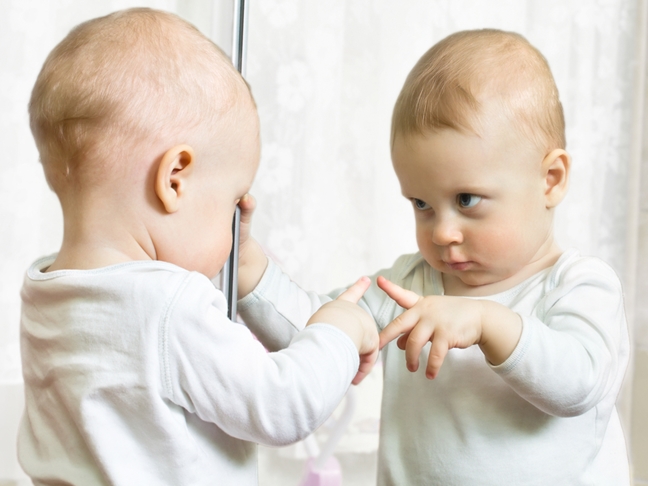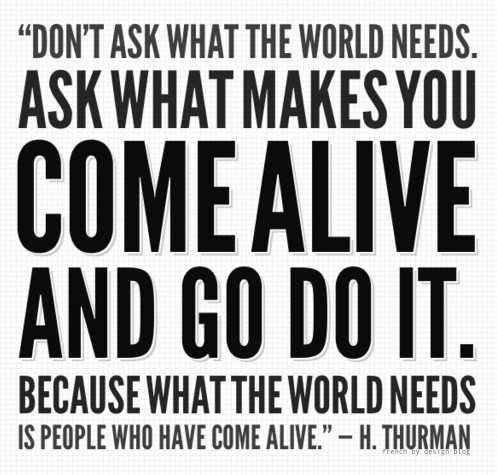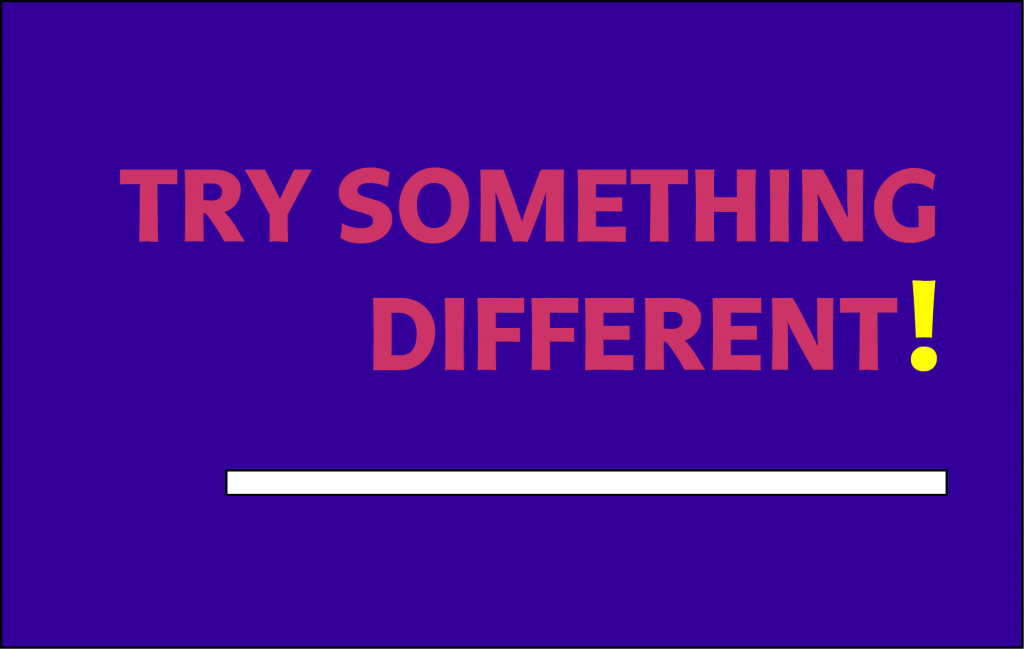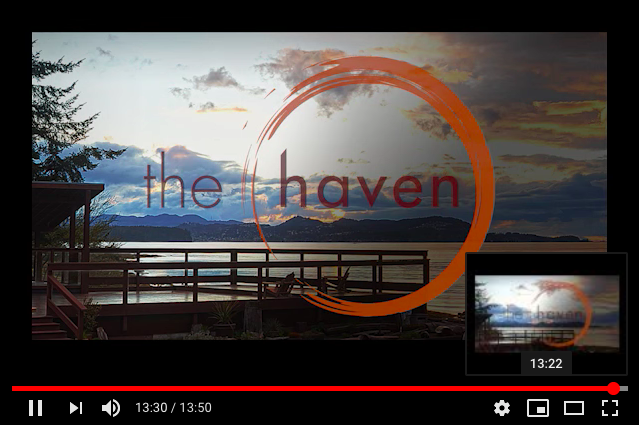The Power of Direct Mirroring
This article written by Joann Peterson, The Haven’s first Director of Education, was first published in Shen magazine in the spring of 1996. Joann co-created The Power of Direct Mirroring which is now led by Cathy McNally and Wendy Huntington.
MIRRORING: The Discovery Of The Self
It seems that most of us have a love/hate relationship with mirrors. Looking into a reflecting surface, we take in information and interpret it to be a “truth” about our body and our image/identity. Believing that mirrors never lie, we may develop an avoidance phobia, spend hours creating the best possible image of ourselves to present to the world or merely profess a casual interest as we glance into a mirror well placed to reflect back only the most carefully selected parts of our anatomy. Seeing ourselves reflected from another surface is seldom a neutral experience.
The very first time we experienced mirroring was not from a physically constructed surface, but from the most significant person in our world. For most of us, this experience occurred during the first days of life, when we turned our head in response to an increasingly familiar voice and maneuvered our eyes to be in contact with Mother. In silent query, this gaze asked one of the most vital questions of our lives: “Am I really here? Do you see me?”
The ensuing dialogue, expressed with and without words, continued throughout childhood and later expanded to include significant others, often authoritative figures. We became intimately involved in a lifelong process of creating ourselves and legitimately used first our parents then others as a valuable feedback system. In this process we forged the very foundation of our sense of personal definition and identity.
Unfortunately, many of our mirroring sources were unclear and distorted surfaces that had no visible “defective product” label. We adopted as “truth” information that was flawed in accuracy. The distortions are familiar to many of us: the concave mirror in which the messages reflect fault, inadequacy and rejection; the convex mirror in which we and our accomplishments are interpreted as bigger than life, where striving and goal achievement is the only process valued, or the disengaged mirror in which the message reflects disinterest, invisibility and absence of connection. These represent but a few of the many distortions offered from people who themselves had grown up with flawed mirrors.
I recently had a surprise visit back to a distorted mirror message when I scheduled a hair cut appointment. For the first time in my adult life, I contemplated getting my hair cut short. Before the words were out of my mouth, I grew anxious, nauseous and was close to tears. Staring at myself in the mirror, draped and damp and waiting to be shorn, I watched my head begin to shrink and my ears begin to grow and ultimately wave in the breeze. From the recesses of my memory, from some archaic library within my past, came the words “We will never, never cut your hair short, Joann. You have ears as big as Dumbo.”
Suddenly, I was 8 years old and pestering my mother for a short hair cut. I remembered hurting deeply as I listened to my mother and really looked in the mirror discovering the truth myself. Then, I thought I was stupid for not having seen this flaw before! I was chagrined and later amused to discover that this mirroring experience had unconsciously shaped my picture of my own body and had contributed to years of hair cutting anguish. I checked out the accuracy of Dumbo-vision with my hair dresser and he gave me a very studied opinion that seemed direct, relevant and one that ultimately left the decision up to me. So, I decided to cut! With inches of my shorn hair piled on the floor, I peeked into the mirror and discovered I loved this new version of me. Dumbo no longer reigned; either my mother had flawed perceptions or my head had grown to accommodate two normal sized ears. In any event, with conscious decision, I rejected the mirror that no longer served my picture of me and chose my own updated vision to reside as my mental picture of myself.
Then, I began to wonder how much of my reactive, “automatic function” beliefs about myself and life were related to distorted mirroring experiences. I believe that over the years, a great deal of my context was determined by others; I grew up very afraid and therefore vigilant about others’ attitudes and behaviors toward me. I was, and am still, struggling with an attachment to field dependence; I am tempted to look to others for information about me before I assess myself inwardly. In that way, I abandon myself. When I consciously assess myself first and then invite feedback from others, I offer myself the possibility of becoming more individuated.
Fortunately, there are mirrors that are reasonably clear and without distortion or cracks. These are called direct mirrors because what they offer is a direct reflection of the experience without biased interpretation. The messages are personal, thoughts and feelings are separated, interpretations are usually descriptive rather than judgmental (about outcome) and honesty is an essential ingredient.
My mother might have said, “Joann, I know summer’s coming and that you hate the time we spend unsnarling your curls. You really want short hair. Let’s look in the mirror, hold your hair up to the length you want it. What do you see?….. I see that your face is small because you’re still growing and I think that with your hair short your ears look pretty big. Do you agree? I don’t like your hair short; I like it longer. But, it’s your hair, what do you choose? How are you feeling about what I’ve told you?…..” Direct mirroring is difficult for most of us to reflect because it requires presence, consciousness about our own process and careful attention to responsible communication. What gets in our way is a desire to control and shape others’ experiences and an arrogance about knowing the “truth.”
One of the difficulties of the mirroring process is that we “give unto others what was given to us” thus perpetuating distorted mirroring with our own family and friends. Experiencing frequent diminishment in my parents’ eyes, I offered my sons a grandiose picture of their early accomplishments. (A mushroom drawing became a framed masterpiece in the family gallery–the bathroom).
Others, still smarting from years of belittling messages, will unconsciously tend to mirror others in the same way out of pattern repetition or to perpetuate a destructive pecking order. If we have received adulation and grandiose acclaim for achievements, we may grow entitled to this heady attention despite the fact that deep within ourselves we judge this mirroring with contempt as inaccurate. In this mechanism self hatred thrives. Without consciousness, these processes continue unchecked from generation to generation.
Bringing awareness to distorted mirroring, realizing the impact of these messages in our lives, and interrupting the cycle through learning how to directly mirror one another is the essence of MIRRORING: Discovery Of The Self, a new workshop Linda Nicholls and I have created. We’re excited about the discoveries people are making in the workshop and we continue to update our own self perceptions. The format of the three days invites us to revisit our relationship to physical mirrors and body image, to learn more about the mirroring patterns that were part of the crucible of our self identity, and to offer one another clearer, direct feedback.







